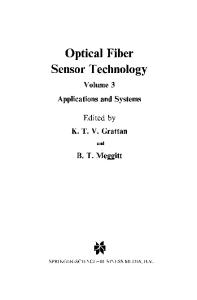Polyurethane Nanofiber Webs for Sensor and Actuator Applications in Microelectromechanical Systems (MEMS)
- PDF / 1,460,376 Bytes
- 6 Pages / 595 x 842 pts (A4) Page_size
- 1 Downloads / 394 Views
A5.29.1
Polyurethane Nanofıber Webs for Sensor and Actuator Applications in Microelectromechanical Systems (MEMS) Mustafa M. Demir, Mansoor Naseer, Thomas F. Bechteler, Yasar Gurbuz, Yusuf Z. Menceloglu
Sabanci University Faculty of Engineering and Natural Sciences Orhanlı-Tuzla, 34956 Istanbul/Turkey
ABSTRACT Sensor application of Polyurethane Nanofiber Webs (PNW) has been explored in this study. PNW were prepared by electrospinning of the polyurethane solution in dimethylformamide. Silver nanoparticles with a size of 60 nm on PNW were produced by precipitation of AgNO3 in alkaline media. A micromachined capacitive pressure sensor has been designed using a special elastic and conducting thin membrane (PNW) as an active electrode sensing the pressure. With an additional inductor and a metal-semiconductor field effect transistor (MESFET), a microwave oscillator has also been designed as part of the system. The capacity variation due to changing pressure results in a frequency shift of this oscillator. This frequency shift is measured and corresponds to the pressure. The simulations performed on this structure show a very good linearity over a wide range of applied pressure which could be detected by change in oscillator frequency. These results indicate that an implementation of PNW as an active material in capacitative sensing applications of MicroElectroMechanical Systems (MEMS) could be feasible. INTRODUCTION The application of conducting fibers as a sensing element is a new challenge in microelectronics. In a fluid flow system, a MEMS based sensor can be used to convert the pressure into a readout. The sensor is an elastic membrane which conducts electricity and recover itself upon deformation. Displacement due to bending vary the resistance of the membrane, that is the stimulus. The key to the success of producing sensor is metallization of electrospun polyurethane mat that provides all the requirements. Electrospinning is a new method for forming nanoporous fibrious membrane composed of randomly distributed submicron diameter fibers. When compared thin films of conductive polymers, nanofibers have been found superior in sensing devices [1]. Such thin fibers provide high surface area to mass ratio, e.g. 100 m2/g for a fiber with a diameter of 50 nm. An interesting aspect of these high-surface area material is the rapid response. Fibers electrospun from solutions of polyurethanes have good elasticity and strength [2]. Higher strength can be achieved by preparing uniaxially aligned nanofibers [3]. The electrospinning process has been well established for insulating polymer. Resistance to conduct charges is a problematic issue for use with the device fabricaton that require conductivity. Metallization of electrospun nanofibers was studied earlier by Yang et all who prepared silver nanoparticles on polyacrylonitrile nanofiber and achieved conductivity on the order of 100 nS cm-1 [4]. In the present work, silver nanoparticles were precipitated on the electrospun nanofibers from its salt solution. The conductivity
Data Loading...











